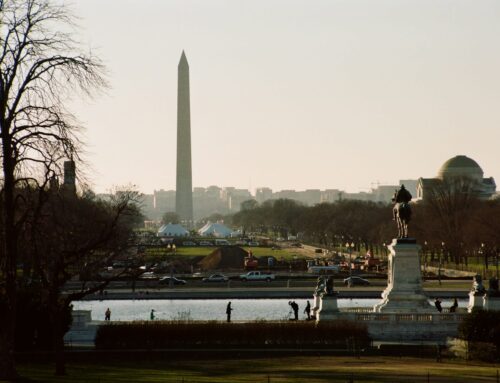OLMSTED, Ill. — It took 30 years, nearly $3 billion of taxpayer and industry money, and just over 45 million hours of work, but the biggest traffic jam on the nation’s rivers is about to be cleared.
Next month, U.S. Army Corps of Engineers brass, elected officials, and others will host a ribbon cutting ceremony at the new Olmsted locks and dam, located about 964 miles down the Ohio River from Pittsburgh. When Olmsted officially opens — Corps officials expect that will be in October — it will replace deteriorating Ohio River Locks 52 and 53, the busiest on the nation’s river system.
Like so much river infrastructure, the aging Ohio River locks and dams cause costly delays for barge operators who push about 875 million tons of coal, grain, petroleum and other products along the U.S. rivers.
About 90 million tons of that moves through “temporary” lock chambers that were built at Lock 52 in 1969 and Lock 53 in 1979. Temporary became permanent. Consequently, locks that were never intended for extended use are constantly breaking down. One Corps official said the agency will be fortunate if Lock 52 survives until the end of this year.
Since November, problems at the two sites have cost barge operators about $65 million, according to Marty Hettel, vice president of American Commercial Barge Line and chairman of an industry group that advises the Corps.
Olmsted will cut the time it takes for a tow of barges to move through a lock from 2.5 hours — assuming Locks 52 and 53 were open and operating efficiently — to 30 minutes.
“When Olmsted opens up, it should alleviate those delays,” said Peter Stephaich, chairman and CEO of Campbell Transportation, a Houston, Pa., barge operator.
For Pittsburgh’s river industry, completion of Olmsted could mean more money for Western Pennsylvania’s 23 sets of locks and dams, among the oldest river infrastructure operated and maintained by the Corps. Congressional failure to provide sufficient annual funding for Olmsted was a major reason for costly delays in the Corps’ plans to replace locks and dams on the Monongahela River at Braddock, Elizabeth and Charleroi where the dam is more than 100 years old.
Olmsted was authorized by Congress in 1988 at an estimated cost of $775 million. At the time, the project was expected to be completed by 2000. Congress authorized the Lower Mon project four years later at an estimated cost of $750 million. That project, still several years away from completion, was originally expected to be completed in 2004.
Massive cost overruns at Olmsted sucked up all of the limited federal and industry money available each year for lock and dam projects. Taxpayers typically provide 50 percent of the funding for major projects like Olmsted. Barge operators cover the other half through a tax on the diesel fuel they consume.
Those economics changed in 2013, a year after Congress was told it would take $3.1 billion to build Olmsted and that the project wouldn’t be operational until 2022. Congress changed the funding formula for Olmsted, shifting 75 percent of the burden to taxpayers. A year later, Congress increased taxpayer support again to 85 percent and barge operators offered to increase the diesel fuel tax from 20 cents to 29 cents per gallon. The increase was the first since a 1-cent hike in 1995.
The increased funding allowed the Corps to award larger, more efficient construction contracts. The result: Olmsted is expected to come in $325 million under the 2012 estimate of $3.1 billion and will be completed four years sooner. Taxpayers will cover about $1.9 billion of Olmsted’s price tag while the industry will cover an estimated $1.1 billion, according to the Corps.
Not everyone is happy about shifting Olmsted’s costs. Taxpayers for Common Sense maintains the river industry is heavily subsidized, with taxpayers footing 90 percent of the bill for building, operating and maintaining locks and dams. The Washington, D.C. watchdog group said abandoning the 50-50 cost-sharing formula for Olmsted set a dangerous precedent.
Presidents dating all the way back to Franklin Roosevelt have proposed charging barge operators fees for moving through river locks. President Donald Trump’s fiscal 2019 budget proposal seeks to collect $1.7 billion in new fees from barge operators over the next decade. So far, the river industry has convinced Congress to thwart the proposals and remains adamant in opposing them.
“We do not need a user fee at any of these gates,” former National Corn Growers Association president Garry Niemeyer told journalists touring Olmsted last week.
With work wrapping up at Olmsted, the Corps and river industry are expected to move on to other high priority projects. Work on the Lower Mon is now expected to cost between $1.2 billion and $2.7 billion, depending on how much of the work authorized 26 years ago is funded. Other priorities include replacing locks on the Tennessee River near Chattanooga and western Kentucky and a major rehabilitation of the LaGrange lock and dam on the Illinois River in Versailles, Ill.
Barge operators on the Upper Ohio River are hoping there will be money for deteriorating locks at Emsworth, Dashields and Montgomery. Congress in 2016 authorized replacing auxiliary lock chambers at the Ohio River sites with larger chambers at an estimated cost of $2.7 billion. But barge operators who serve agricultural customers are pleading for work on outdated, dilapidated infrastructure on the Illinois and the Upper Mississippi rivers.
“We’re facing this throughout our entire waterways system,” said John Eckstein, president of Marquette Transportation, a Paducah, Ky. barge operator.











Get Social